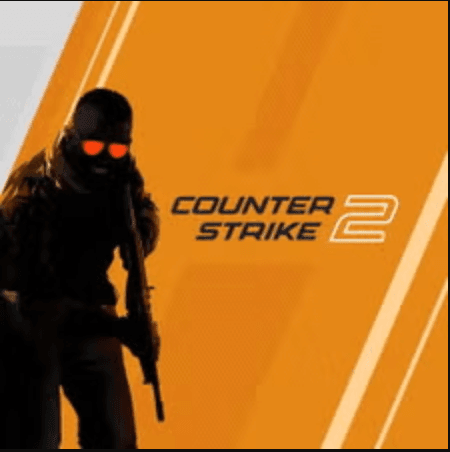SHOCKWAVE IN AZEROTH: WORLD OF WARCRAFT’S ‘MIDNIGHT’ EXPANSION CULLS KEY COMBAT ADDONS, RECALIBRATING COMPETITIVE PVE
Popular Now
 Sonic the Hedgehog™ Classic
Sonic the Hedgehog™ Classic
 NBA 2K24
NBA 2K24
 Valorant
Valorant
 Rust
Rust
 Schedule I
Schedule I
 Free Fire Max
Free Fire Max
 Minecraft
Minecraft
 EA SPORT FC 25
EA SPORT FC 25
 Black Myth: Wukong
Black Myth: Wukong
 Counter-Strike 2
Counter-Strike 2 
The landscape of high-level World of Warcraft ($MMO Gaming) is on the precipice of a seismic shift. As anticipation builds for the next major expansion, code-named ‘Midnight,’ developers at Blizzard Entertainment have confirmed plans to fundamentally restrict the core functionality of the game’s most ubiquitous third-party software. This bold, and intensely controversial, move is set to effectively eliminate the tools that have defined competitive $PvE (Player-versus-Environment) for over a decade, most notably the precise, real-time alerts provided by $Deadly Boss Mods (DBM) and a host of powerful $WeakAuras.
This is not merely an interface update; it is an architectural decision that signals a dramatic re-evaluation of Blizzard’s $Game Design Philosophy, impacting how players will engage with dungeons, raids, and the entire $Endgame Content structure moving forward. The goal, according to official statements, is clear: to reclaim the moment-to-moment combat experience and ensure that success is driven by innate game knowledge and reaction, rather than dependency on external computational aids.
THE END OF THE ADDON ARMS RACE: WHY DBM AND WEAKAURAS ARE FACING OBSOLESCENCE
For years, the relationship between $Blizzard Entertainment’s encounter design team and the $Gaming Addons community has been described as an “arms race.” As raid bosses became increasingly complex, requiring coordinated, split-second reactions, third-party developers created tools that could read the game’s combat log in real time, translating mechanical cues into immediate, often automated, visual and audio warnings.
The result was a scenario where tools like DBM or BigWigs transformed from helpful aids into a virtual requirement for entry into serious raiding guilds or high-level Mythic+ groups. The latest restrictions being implemented in the Midnight pre-patch specifically target the Application Programming Interface (API) functions that allow these mods to access real-time combat data in high-pressure instances. This is the technical death knell for one of the most prolific $MMO Mods in history.
 The Core Functionality Being Restricted:
The Core Functionality Being Restricted:
- Real-Time Combat Log Access: Addons will no longer be able to read the live combat log within an instance for moment-to-moment decision-making. This prevents the immediate, programmatic triggering of warnings for abilities.
- Positional Data and Automation: Restrictions will heavily limit an addon’s ability to calculate and communicate precise positional assignments or complex reaction sequences based on live information.
- WeakAuras’ Combat Core: The ability for WeakAuras to create custom, highly specific tracking for internal cooldowns, personal buff/debuff timers tied to exact boss states, and complex in-combat flowcharts is being crippled. The authors of WeakAuras themselves have indicated the resulting product would be a “barely recognizable version,” leading to the cessation of development for key combat features into $Midnight.
The reasoning from the development team is that the ‘air horn’ effect of third-party alerts fundamentally undermines the intentional visual and audio language of a boss encounter. $WoW Expansion design will now be forced to operate within the constraints of the base interface, which is a massive win for $Accessibility in Gaming and new player onboarding.
BLIZZARD’S COUNTERMEASURES: THE NEXT-GEN GAMING UI
To mitigate the void left by these restrictions, Blizzard is launching a suite of native features that integrate core addon functionality into the default client. This move is part of a larger trend in Next-Gen Gaming Experience to streamline UI/UX and reduce the dependency on external applications.
In the Midnight Alpha, players are testing a series of in-built tools designed to provide the necessary information without resorting to third-party data manipulation:
- Native Boss Mod System: A developer-controlled system for announcing key boss abilities and timers, designed to be reliable and consistent without requiring a separate download.
- Enhanced Cooldown Manager: Significant improvements to the base UI’s ability to track personal cooldowns, buff procs, and vital resources, allowing players to customize the look and feel—though only utilizing the data provided by the official tools.
- Integrated Damage Meter: Finally, a built-in damage and healing meter is being added, ending the long reign of external solutions like Recount or Details!.
This integration is crucial for the $Future of MMOs. By providing robust, native tools, Blizzard is taking ownership of the competitive experience, which, theoretically, should lead to better balance and more predictable encounters. However, the true test will be whether the native solutions offer the depth and customization that the millions of dedicated users have come to expect from $High CPC Keyword addons.
 THE IMPACT ON COMPETITIVE PVE: A NEW SKILL CEILING
THE IMPACT ON COMPETITIVE PVE: A NEW SKILL CEILING
The immediate and most visible impact of these restrictions will be felt in the Race to World First (RWF) and the top echelon of the Mythic+ ladder. Guilds competing at this level dedicate significant resources to developing custom WeakAuras and strategies, often requiring a dedicated coder on the team.
The removal of real-time computational power will force a return to core $Gameplay Mechanics mastery. Players will have to rely on:
- Visual and Audio Cues: Learning to react instantly to the game’s intrinsic animations and sounds, rather than an air-horn warning.
- Raid Leader Callouts: Greater reliance on human coordination and shot-calling over automated text/voice alerts.
- Memory and Muscle Memory: A deeper commitment to memorizing encounter timelines and rotation flows without the aid of dynamic on-screen flowcharts.
The consensus among $Gaming Industry veterans is that while the initial transition will be messy and highly demanding, it will ultimately lead to a more authentic and skill-based environment. The emphasis shifts from computational setup to raw player performance, rewarding quick thinking and awareness over addon configuration. This pivot solidifies Blizzard’s commitment to modernizing the $World of Warcraft brand and pushing a unified $Gaming Experience across all levels of play.
MARKET AND $GAME DEVELOPMENT TRENDS: THE WIDER IMPLICATIONS
This dramatic policy change in World of Warcraft is not an isolated incident; it reflects broader Game Development Trends regarding control over the core player experience. For years, MMOs have outsourced critical interface functions to their community. Blizzard’s move with Midnight serves as a strong signal to the entire $MMO market that developers are stepping in to consolidate and standardize the play experience. This can protect against exploits, ensure parity between different player groups, and guarantee a minimum level of usability for all subscribers.
Furthermore, the restrictions ensure that the intellectual challenge of Raid Boss Design is preserved. When players can automate reactions to mechanics, the challenge is trivialized. By removing the primary automation tools, Blizzard is betting on their ability to create more engaging, readable, and satisfying encounters that stand on their own merits.
In summary, World of Warcraft: Midnight is not just an expansion with new zones and lore; it is a profound declaration about the future identity of the game. It is a calculated risk to break a decade-long dependence on third-party software, promising a purer, more skill-driven $Competitive Gaming environment—but one that will initially alienate a large segment of its veteran player base accustomed to the convenience and power of the community’s most popular addons. The market awaits the launch with bated breath to see if Blizzard’s native solutions can truly replace the irreplaceable.









 The Core Functionality Being Restricted:
The Core Functionality Being Restricted: